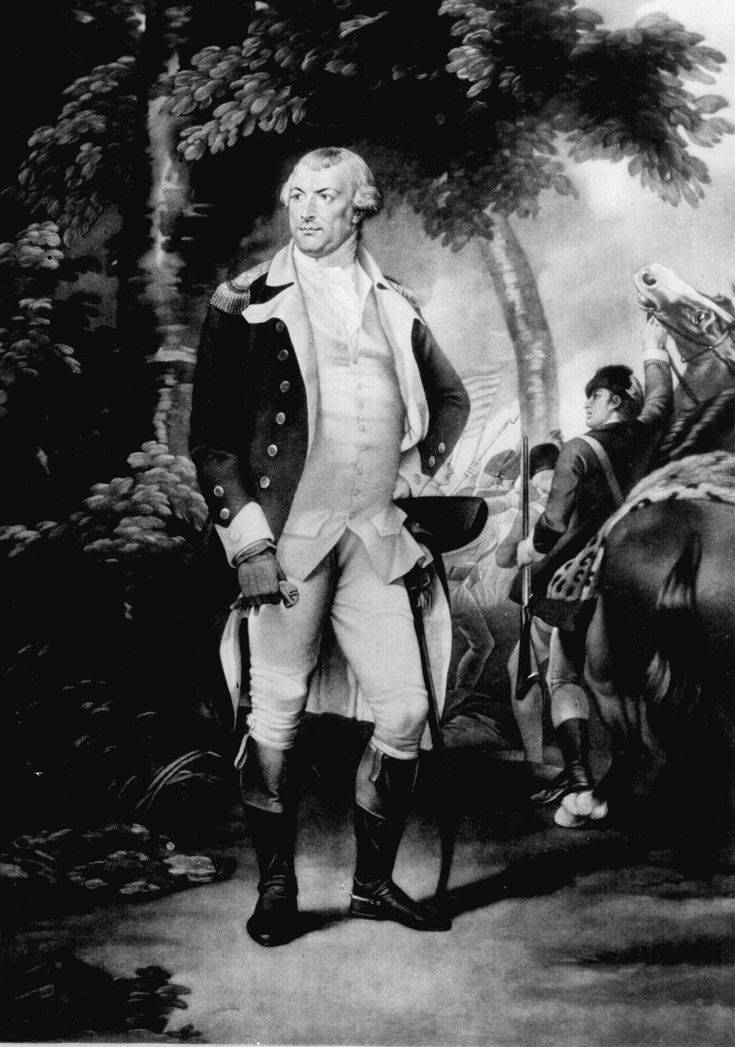Nathanael Greene is one of the most underrated yet pivotal figures of the American Revolution. While names like George Washington, Thomas Jefferson, and Benjamin Franklin dominate history books, Greene’s contributions were just as critical in securing American independence. As a self-taught military strategist, he played a vital role in turning the tide against British forces, particularly in the Southern campaign. His leadership, resourcefulness, and strategic brilliance earned him the respect of both his allies and enemies, making him one of the most effective generals of the Revolutionary War.
Early Life and Background
Born on August 7, 1742, in Warwick, Rhode Island, Nathanael Greene came from a Quaker family that valued discipline and hard work. His father, a devout Quaker and successful businessman, ensured that young Nathanael received an education despite the Quaker community’s general disapproval of higher learning. He had a strong interest in books and self-improvement, which later helped him become a well-informed military leader despite having no formal military training.
Greene was born with a limp, which made physical activities challenging, but that did not deter him from pursuing an active life. As a young man, he took over his family’s iron forge business, which provided him with valuable experience in logistics and management-skills that later proved useful in his military career.
Entry into the Revolutionary War
Before the outbreak of the American Revolution, Greene was deeply involved in the growing resistance against British rule. As tensions rose, he joined the local militia, defying Quaker pacifist traditions. His commitment to the Patriot cause led to his rapid rise in rank. In 1775, when the war officially began, Greene was appointed a brigadier general in the Continental Army, thanks to his leadership qualities and strong support for independence.
Despite his lack of battlefield experience, Greene studied military tactics extensively and learned from experienced officers. He quickly gained the confidence of General George Washington, who recognized his intelligence and dependability. Washington eventually entrusted him with key responsibilities, setting the stage for Greene’s crucial role in the war.
Greene’s Role in the Revolutionary War
Greene first made a significant impact during the Siege of Boston in 1775, where his leadership helped the Continental Army force the British to evacuate the city. Following this success, he played an important role in battles across New York and New Jersey, assisting Washington in several critical engagements, including the Battle of Trenton in 1776.
One of Greene’s most notable contributions came when he was appointed Quartermaster General in 1778. The Continental Army was struggling with supply shortages, and morale was low. Greene took on the difficult task of reorganizing the army’s logistics, ensuring that troops had food, clothing, and ammunition. Though he disliked administrative work, he excelled in it, greatly improving the army’s ability to sustain long campaigns.
The Southern Campaign: Greene’s Masterstroke
By 1780, the war had shifted focus to the Southern colonies, where British forces had gained the upper hand. After the disastrous American defeat at the Battle of Camden, Washington placed Greene in charge of the Southern Department, making him the commander of the Continental Army in the South.
Greene’s strategy in the South was nothing short of brilliant. Understanding that his army was outnumbered and poorly supplied, he avoided direct confrontation with the British, instead employing a strategy of attrition. He divided his forces and forced the British to chase him across vast distances, wearing them down through guerrilla-style tactics. One of his most famous moves was his tactical retreat after the Battle of Guilford Courthouse in 1781. Though technically a British victory, the battle severely weakened British forces under General Charles Cornwallis, setting the stage for their eventual defeat.
Greene continued his campaign, reclaiming key territories and forcing the British to retreat toward the coast. His leadership in the Southern theater ultimately helped trap Cornwallis at Yorktown, where he was forced to surrender to Washington’s forces in October 1781, effectively ending the war.
Legacy and Death
After the war, Greene’s contributions were widely recognized, though he never received the same level of fame as Washington or other Founding Fathers. He retired to a plantation in Georgia, which was granted to him in gratitude for his service. However, his post-war life was short-lived. In 1786, at the age of 43, he died of heatstroke, leaving behind a legacy of military brilliance and unwavering dedication to the American cause.
Nathanael Greene’s impact on the American Revolution cannot be overstated. His ability to adapt, strategize, and persevere against overwhelming odds made him one of the greatest generals of his time. Though often overshadowed in history, his efforts were instrumental in securing America’s independence, and his legacy continues to inspire military leaders and historians alike.


